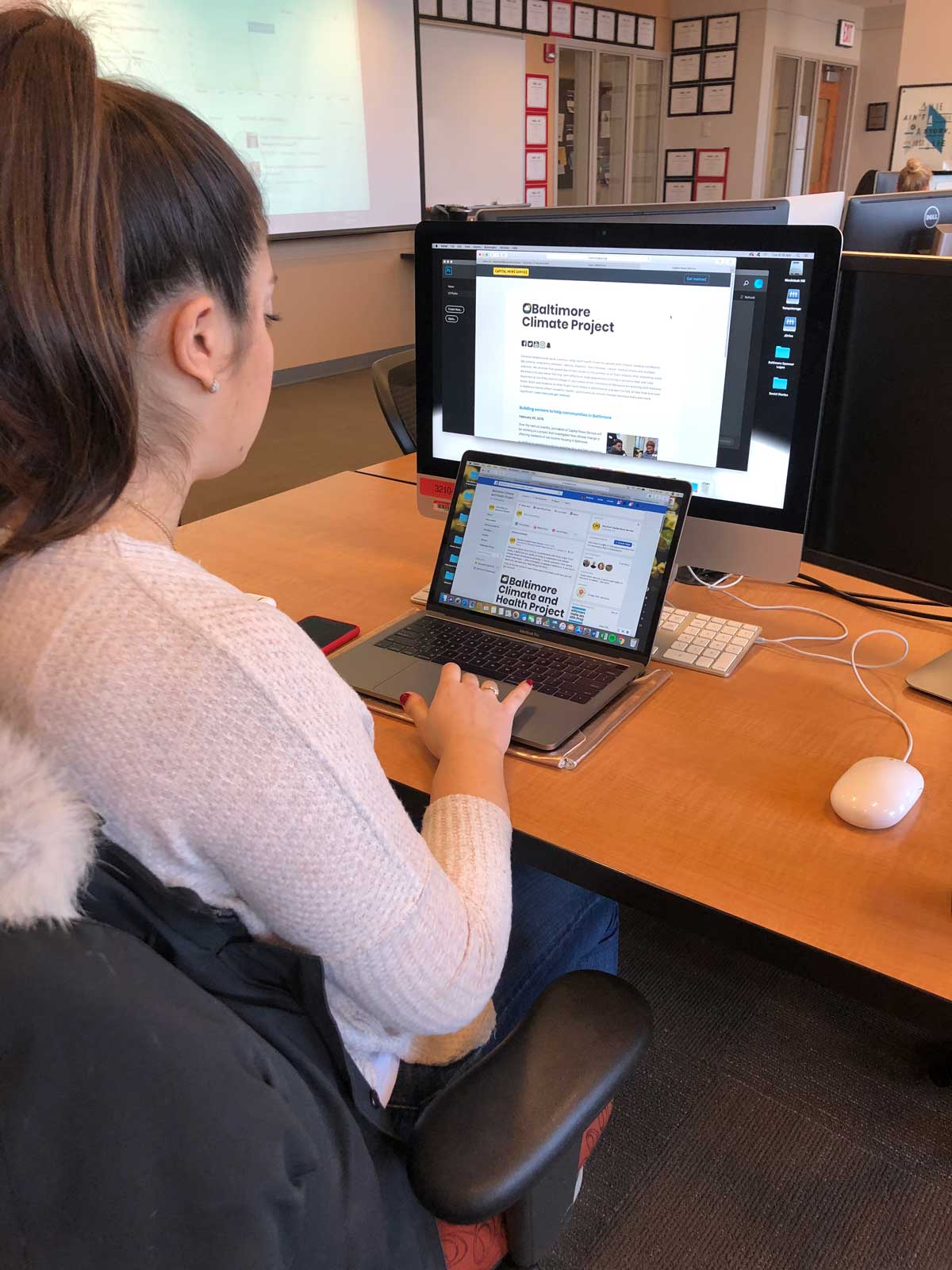Extreme temperatures pose a serious, long-term health threat for people with chronic medical conditions like asthma, respiratory diseases, obesity, diabetes, heart disease, cancer, mental illness and multiple sclerosis. We all know that people die of heat stroke in the summer or of heart attacks after shoveling snow. We know a lot less about the long-term effects on large populations of living in extreme heat and cold. Reporters at the Philip Merrill College of Journalism at the University of Maryland are working with National Public Radio and students at Wide Angle Youth Media in Baltimore on a project to look at how heat and cold in Baltimore homes affect residents' health – particularly as climate change becomes more and more significant. Learn more and get involved.
Engaging audiences and connecting with communities through social media

By Brittany Goodman
Capital News ServiceFebruary 26, 2019
Over the next six months, journalists at Capital News Service will be working on a project that investigates how climate change is affecting residents of low income housing in Baltimore. A large part of this project relies on engagement and participation from community members. Our social journalism and audience engagement team has been using social media to identify sources for the project, tap into the topic-relevant conversations, and connect with communities around the city.
Establishing social media as a central project component
Throughout the development and reporting process, CNS hopes to engage and connect with audiences and communities that are already interested in this topic. This helps us to better understand the nuances of the topic in addition to building an audience around the project. We hope the ongoing social media engagement leads to greater community involvement and interactivity, where community members will feel motivated to share the project with their online networks.
We hope our social platforms and other digital assets will serve as the “central nervous system” of the project. By tapping into communities across platforms like Facebook, Twitter, YouTube, Instagram, LinkedIn, and Reddit, we hope to identify supporters and audiences, encourage community collaboration, and ultimately expose people to the issues and problems at hand.
Using social media to connect with communities
The CNS Social team has been actively researching community groups, organizations and influencers within the Baltimore community. Using social media platforms including Facebook, Twitter, LinkedIn, and Reddit, our team has identified organizations and groups interested in community issues in Baltimore. We have also been able to identify groups and individuals concerned about how extreme temperatures are affecting Baltimore residents, especially in low-income and older areas of the city.
We are also working with community partners, like Wide Angle Youth Media, and other sponsors who will help us reach a broader audience. We intend to tap into their online communities in order to maximize our reach and impact.
Making Facebook the hub for conversation
The Facebook group is an open forum that will provide regular updates about the project. It also serves as a direct line of communication between community members and the project teams. We also hope that residents with our temperature sensors in their homes will use this space to share updates, show photos and ask questions.
In the long term, we plan to use the group to have conversations with individuals and community organizations/groups who share our passion to understand how climate change-driven temperature extremes — hotter summers, more severe winter cold snaps — affect the health of people in Baltimore.The Facebook group will become a ‘trust filter’ where our members will be able to evaluate claims and verify information - driving civic conversation and feedback.
If you’re not on Facebook, or just want to get project updates right to your inbox, sign up for our weekly e-newsletter. Here’s how you can get it and here’s what to expect.





